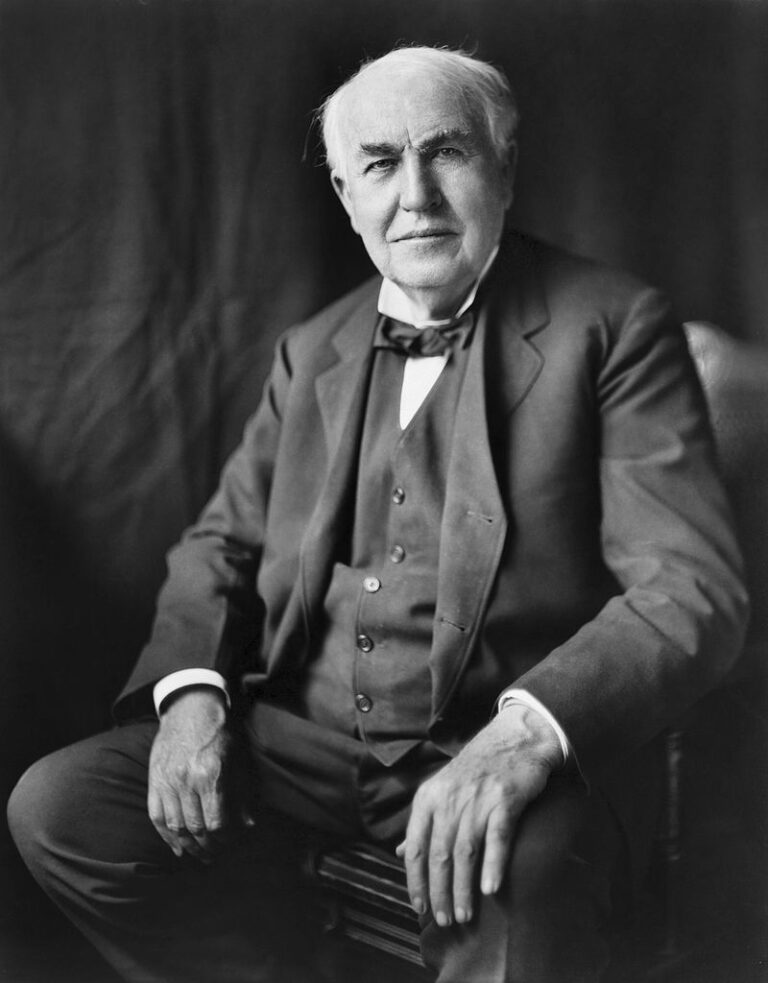Leading with Accountability: Going First to Define a Thriving Culture
Forging Exceptional Leadership through Accountability and Going First
Accountability and leadership are two essential pillars that shape the success and effectiveness of any team or organization. In the complex and ever-changing landscape of today’s business world, leaders are faced with numerous challenges that require them to navigate through uncertainty, inspire their teams, and achieve exceptional results. However, true leadership goes beyond simply delegating tasks and giving orders; it involves leading by example, setting standards, making sacrifices, and defining the very culture in which their teams operate.
At the heart of effective leadership lies the principle of accountability. Leaders who hold others accountable for their actions, behaviors, and performance must first be willing to be held accountable themselves. It is a fundamental concept that demands leaders to live up to the standards they set for their teams, ensuring that their actions align with their words. After all, expecting others to live by a standard that leaders themselves are not willing to live sends a contradictory message that erodes trust and undermines the leader’s credibility.
In this comprehensive article, we delve into the core tenets of leadership accountability and explore how leaders can foster a culture of responsibility, trust, and high performance within their teams. We will examine the critical components of accountability, namely leading by example, living the expected standard, and sacrificing for the team. Additionally, we will emphasize the pivotal role leaders play in defining and shaping organizational culture, and how their behaviors and actions directly impact the overall success of the team.
Leadership is not a passive role but an active one that requires leaders to lead from the front. By going first, leaders demonstrate their commitment and dedication to the vision, mission, and values of the organization. They inspire their teams to follow suit, fostering a culture where accountability becomes a shared responsibility and a driving force for success. We will delve into the concept of leaders going first and explore how their courageous actions pioneer change, inspire growth, and create a positive and thriving environment.
Furthermore, leaders have the power to define the culture within their organizations. They set the tone, establish the norms, and shape the behavior of their teams. By aligning their actions with the desired culture, leaders lay the foundation for a cohesive and harmonious work environment that encourages collaboration, innovation, and continuous improvement. We will explore the critical role leaders play in defining culture and provide practical strategies for leaders to actively shape the culture they envision.
Throughout this article, we will draw on insights gained from over four decades of experience in the field of leadership development. While the principles discussed may seem straightforward, their implementation requires dedication, self-reflection, and a commitment to personal growth. By embracing the concept of accountability and adopting a leadership approach that exemplifies the values they espouse, leaders can create a profound impact on their teams and organizations, driving them towards excellence and success.
Join us as we embark on a journey to explore the intricate relationship between accountability and leadership. Discover how leaders can lead with integrity, inspire their teams through selfless actions, and define a culture that cultivates the best in everyone. By the end of this article, you will have gained valuable insights and practical strategies to become a more effective and influential leader, leaving a lasting impact on those you lead and the organization as a whole.
Understanding Accountability in Leadership
Accountability in a leadership context
Accountability, in the context of leadership, refers to the willingness of leaders to take responsibility for their actions, decisions, and the outcomes they produce. It involves holding oneself answerable to a set of standards, values, and goals, as well as holding others on the team to those same expectations. Leaders who embrace accountability understand that their actions have consequences and that they are ultimately responsible for the success or failure of their teams.
Role of accountability in fostering trust and transparency within a team or organization
Accountability is a vital component in building trust and establishing transparency within a team or organization. When leaders hold themselves accountable and set the example for others to follow, it creates an environment of trust, where team members feel secure in their roles and confident in their leaders’ ability to guide them. Additionally, accountability promotes transparency by encouraging open communication, honest feedback, and a willingness to address and learn from mistakes.
A team that operates with accountability can navigate challenges more effectively, as individuals take ownership of their responsibilities and collaborate seamlessly. When team members are held accountable, they are more likely to fulfill their commitments and deliver high-quality work, which strengthens overall team performance and boosts morale.
Consequences of a lack of accountability
The absence of accountability within a team or organization can lead to numerous detrimental consequences. Without accountability, individuals may shirk their responsibilities, fail to meet deadlines, or exhibit subpar performance, which can disrupt team cohesion and hinder progress. Moreover, a lack of accountability erodes trust among team members and diminishes confidence in leadership, creating a toxic work environment where blame-shifting and finger-pointing become prevalent.
When leaders themselves do not practice accountability, it sets a negative precedent for the team. Team members may perceive it as unfair or hypocritical when they are held to higher standards than their leaders. This can lead to decreased motivation, decreased engagement, and even increased turnover as individuals become disillusioned with the lack of integrity and consistency displayed by their leaders.
It is crucial for leaders to recognize the consequences of a lack of accountability and the negative ripple effect it can have on the team and organization as a whole. By understanding the importance of accountability and its impact, leaders can proactively create a culture that embraces responsibility, trust, and high performance.
In the next sections, we will delve deeper into the core principles that underpin accountability in leadership: leading by example, living the expected standard, sacrificing for the team, and going first. By exploring these principles, leaders can gain a comprehensive understanding of how to embody accountability in their daily actions and inspire their teams to do the same, ultimately fostering a culture of excellence and achievement.
Leading by Example: Being Accountable as a Leader
The importance of leaders embodying the behaviors they expect from others
One of the most impactful ways leaders can cultivate a culture of accountability is by leading by example. When leaders demonstrate the behaviors, attitudes, and work ethic they expect from their team members, it creates a powerful influence and sets the tone for the entire organization. Leaders who embody accountability in their actions inspire their teams to follow suit, fostering a sense of shared responsibility and a commitment to excellence.
Leading by example requires leaders to hold themselves to the same standards, if not higher, than those they expect from others. If leaders want their team members to meet deadlines, they must consistently deliver on their own commitments. If leaders expect open and honest communication, they must practice transparency and actively seek feedback. By consistently demonstrating accountability, leaders build trust, credibility, and respect among their teams.
Sharing personal experiences and anecdotes to illustrate the concept
Leaders can enhance their effectiveness in leading by example by sharing personal experiences and anecdotes that highlight the importance of accountability. By recounting their own successes and failures, leaders can demonstrate the impact of their actions and decisions on the team and organization. These personal stories provide tangible examples that resonate with team members, making the concept of accountability more relatable and accessible.
Sharing personal experiences also helps leaders connect with their teams on a deeper level, fostering an environment of authenticity and vulnerability. It shows that leaders are not immune to challenges and mistakes, but are willing to take ownership of them and learn from them. By sharing these stories, leaders encourage a growth mindset and demonstrate that accountability is a continuous journey of improvement.
Explaining the impact of leaders being accountable on the team’s morale and productivity
When leaders exemplify accountability, it positively impacts the morale and productivity of the entire team. Team members feel motivated and inspired when they see their leaders taking responsibility for their actions and actively working towards achieving shared goals. This creates a sense of unity and purpose within the team, fostering a collaborative and high-performing environment.
Moreover, leaders who are accountable create a culture of trust and psychological safety. When team members feel that their leaders are reliable and consistent in their actions, they are more likely to take risks, innovate, and contribute their best efforts. On the other hand, a lack of accountability from leaders can lead to a decline in morale, as team members may feel unsupported and undervalued.
Practical strategies for leaders to demonstrate accountability
To effectively demonstrate accountability, leaders can implement several practical strategies:
-
Clearly communicate expectations: Leaders must communicate expectations and standards clearly, ensuring that team members have a clear understanding of what is expected of them.
-
Set SMART goals: By setting Specific, Measurable, Achievable, Relevant, and Time-bound goals, leaders provide a framework for accountability and enable team members to track progress.
-
Hold regular check-ins and provide feedback: Regular one-on-one meetings and performance evaluations allow leaders to provide feedback, address any challenges, and offer guidance to ensure individuals are accountable for their tasks and responsibilities.
-
Foster a culture of learning from mistakes: Leaders should encourage a growth mindset and create an environment where mistakes are seen as opportunities for growth and improvement. This encourages individuals to take ownership of their mistakes and learn from them.
-
Recognize and reward accountability: Leaders should publicly acknowledge and reward team members who demonstrate accountability, reinforcing its importance and encouraging others to follow suit.
-
Lead with transparency: Leaders should practice open communication, share relevant information, and be transparent about their own successes, failures, and decision-making processes. This fosters trust and encourages others to be open and accountable as well.
By implementing these strategies, leaders can consistently demonstrate accountability and foster a culture where accountability becomes a shared value and expectation.
Leaders who lead by example and embody accountability in their actions create a powerful ripple effect throughout their teams and organizations. By consistently demonstrating accountability, sharing personal experiences, and implementing practical strategies, leaders can inspire their teams to take ownership, strive for excellence, and contribute to the overall success of the organization. Through their own accountability, leaders create an environment that values integrity, trust, and continuous improvement, propelling their teams towards greater achievements.
Setting the Standard: Living the Expected Standard
The significance of leaders setting high standards and living up to them
Leaders play a crucial role in setting the standards and expectations within their teams and organizations. When leaders establish high standards for performance, behavior, and ethics, they create a benchmark for excellence and motivate their team members to strive for greatness. However, it is not enough for leaders to simply set these standards; they must also live up to them consistently.
Leaders who live the expected standard demonstrate their commitment to excellence and integrity. They show that the standards they have set are not arbitrary or imposed from above but are values they embody in their own actions. This consistency between words and deeds builds trust and credibility among team members, reinforcing the importance of accountability and creating a culture where everyone understands and upholds the expected standard.
The influence of leaders’ actions on shaping the behavior and performance of their teams
Leaders have a profound influence on the behavior and performance of their teams. Team members look to their leaders as role models and often mimic their actions and behaviors. When leaders exemplify the expected standard, it sets a powerful example that inspires others to follow suit. Conversely, if leaders fail to live up to the standards they have set, it sends a message that these expectations are not important, leading to a decline in team performance and a loss of trust.
Leaders who consistently live the expected standard create a positive peer pressure within their teams. They establish norms of accountability, professionalism, and ethical conduct that become ingrained in the team’s culture. This alignment of behavior and performance elevates the overall effectiveness of the team and contributes to its long-term success.
Exploring the concept of integrity and how it relates to setting and living by standards
Integrity is a fundamental aspect of leadership accountability. It encompasses honesty, ethics, and consistency between one’s words, actions, and values. Leaders with integrity set and live by high standards because they believe in the principles they espouse.
Setting and living by standards require leaders to make choices that align with their values, even in challenging circumstances. It requires them to prioritize long-term success over short-term gains and to make decisions that benefit the team and the organization as a whole. By consistently demonstrating integrity, leaders create an environment of trust, loyalty, and mutual respect, as team members feel secure knowing their leaders are committed to doing what is right, even when faced with difficult choices.
Leaders who embody integrity also foster an organizational culture that values honesty, transparency, and ethical behavior. By upholding these principles in their own actions and decision-making, leaders establish a strong foundation for a culture of trust and accountability, where everyone understands and upholds the standards that have been set.
Strategies for leaders to live the expected standard
Living the expected standard requires leaders to be mindful of their actions and consciously align them with the values and expectations they have set. Here are some strategies for leaders to live the expected standard:
-
Self-reflection and self-awareness: Leaders must regularly reflect on their behaviors, decisions, and values. This self-awareness allows them to identify areas for improvement and make adjustments to ensure they are consistently living up to the standards they have set.
-
Consistency in decision-making: Leaders should make decisions based on the established standards and values rather than succumbing to personal biases or external pressures. This consistency reinforces the credibility of the expected standard and ensures fairness and transparency in decision-making processes.
-
Accountability partnerships: Leaders can establish accountability partnerships with trusted colleagues or mentors who can provide feedback and hold them accountable to their own standards. These partnerships create a system of checks and balances that support leaders in their commitment to living the expected standard.
-
Continuous learning and development: Leaders should invest in their personal and professional growth to enhance their skills, knowledge, and understanding. Continuous learning allows leaders to stay aligned with industry best practices, adapt to changing circumstances, and lead with expertise and confidence.
-
Soliciting feedback and listening to others: Leaders should actively seek feedback from team members and stakeholders to gain insights into their own behaviors and perceptions. Listening to others’ perspectives fosters a culture of open communication and demonstrates a willingness to learn and grow.
By implementing these strategies, leaders can consistently live the expected standard and create an environment where excellence, integrity, and accountability thrive.
Leaders must recognize the significance of setting high standards and living up to them. When leaders consistently demonstrate the expected standard through their actions and decisions, they shape the behavior and performance of their teams, fostering a culture of excellence and accountability. By embracing integrity and implementing strategies for living the expected standard, leaders inspire their teams to strive for greatness and contribute to the overall success of the organization.
Sacrifice for the Team: Leading with Selflessness
Discussing the role of sacrifice in effective leadership
Effective leadership often requires leaders to make sacrifices for the betterment of their team and organization. Sacrifice in leadership entails putting the needs and interests of the team before personal gains or comfort. It involves making selfless decisions and taking actions that may require personal effort, time, or resources to support the collective goals and well-being of the team.
Sacrifice demonstrates a leader’s commitment, dedication, and genuine concern for the success and growth of the team. It creates a sense of trust, loyalty, and camaraderie among team members, as they witness their leader’s willingness to go above and beyond for their benefit. Sacrifice in leadership is not a sign of weakness or submission but a powerful display of strength and dedication to the collective success of the team.
Examining the motivational power of leaders who are willing to make sacrifices
Leaders who are willing to make sacrifices serve as powerful motivators for their teams. When team members witness their leader’s willingness to put the team’s needs first, it inspires them to reciprocate and invest their own efforts into achieving shared goals. Sacrifice by a leader creates a sense of purpose and meaning, fueling intrinsic motivation within team members.
The motivational power of sacrifice lies in its ability to create a sense of unity and purpose. When team members see their leader leading with selflessness, they develop a deep sense of loyalty and commitment. They are more willing to work collaboratively, contribute their best efforts, and persevere through challenges, knowing that their leader is right there alongside them, making sacrifices for the team’s success.
Illustrating the positive impact of leaders’ sacrifices on team cohesion and loyalty
Leaders who make sacrifices for their team foster a strong sense of cohesion and loyalty within the team. When team members witness their leader’s selflessness, it builds trust and respect. They feel valued and supported, knowing that their leader is genuinely invested in their success and well-being.
Sacrifice by a leader also promotes a culture of reciprocity and collective responsibility. Team members are more likely to support and assist one another, as they have witnessed their leader modeling such behaviors. This enhances collaboration, strengthens relationships, and creates a positive and supportive work environment.
Furthermore, leaders who make sacrifices inspire a sense of loyalty among team members. When individuals see their leader’s unwavering dedication to the team, they develop a deep sense of loyalty and commitment. They are more likely to stay engaged, remain with the organization for longer periods, and become advocates for the team and its goals.
Strategies for leaders to demonstrate selflessness and encourage others to do the same
To demonstrate selflessness and encourage others to follow suit, leaders can employ several strategies:
-
Lead by example: Leaders should model selfless behaviors and actions consistently, showing their willingness to make sacrifices for the team’s benefit.
-
Communicate the “why”: Leaders should effectively communicate the purpose and significance behind the sacrifices being made. By sharing the rationale and connecting it to the team’s goals, leaders can inspire understanding and commitment.
-
Foster a culture of support: Leaders should create an environment where team members support and uplift one another. Encourage teamwork, empathy, and a shared sense of responsibility.
-
Recognize and appreciate sacrifices: Leaders should openly acknowledge and appreciate the sacrifices made by team members, reinforcing the value of selflessness and creating a culture of gratitude.
-
Empower and develop team members: Leaders should invest in the growth and development of their team members, enabling them to take on new challenges and make their own contributions to the team’s success. This empowerment encourages a sense of ownership and a willingness to go the extra mile.
By implementing these strategies, leaders can foster a culture of selflessness, where team members are motivated to make sacrifices for the greater good of the team and the organization.
Sacrifice in leadership is a powerful force that inspires and motivates teams. Leaders who demonstrate selflessness by making sacrifices for the team’s benefit foster cohesion, loyalty, and a shared sense of purpose. By leading with selflessness, leaders create an environment where team members are inspired to reciprocate, resulting in higher engagement, collaboration, and overall team success.
Leaders Going First: Pioneering Change and Growth
Highlighting the importance of leaders taking initiative and leading by example
Leadership is not merely about giving orders or delegating tasks; it involves taking the lead and going first. Leaders who take initiative and lead by example inspire their teams to follow suit, creating a culture of proactivity, innovation, and growth. By going first, leaders demonstrate their commitment, courage, and determination to navigate uncharted territories and overcome obstacles.
Leaders who go first set the tone for change and growth within their teams and organizations. They embody the qualities and behaviors they seek to instill in their team members, encouraging them to step out of their comfort zones and embrace new challenges. Going first is a powerful catalyst for transformation, inspiring others to take risks, learn from failures, and continuously strive for improvement.
Exploring the concept of courage in leadership and its role in driving change
Courage is an essential attribute of effective leadership, especially when it comes to pioneering change. Leaders must have the courage to challenge the status quo, question conventional wisdom, and envision a better future. It takes courage to navigate uncertainty, make tough decisions, and rally others around a shared vision.
Courageous leaders inspire confidence and trust within their teams. When team members see their leader stepping into the unknown with determination and resilience, it creates a sense of safety and empowerment. Courageous leaders foster an environment where taking calculated risks and embracing change is encouraged, fostering a culture of innovation and adaptability.
Sharing examples of leaders who have successfully gone first and inspired their teams
Throughout history, there have been countless examples of leaders who have gone first and inspired others through their actions and vision. Leaders like Mahatma Gandhi, Nelson Mandela, and Martin Luther King Jr. have all led by example, initiating movements that brought about significant social change. Their courage, conviction, and willingness to go first inspired millions of people to join their cause and work towards a better future.
In the business world, leaders like Steve Jobs and Elon Musk have been pioneers in their respective industries. They have consistently gone first, taking risks, challenging norms, and disrupting traditional paradigms. Their visionary leadership and unwavering commitment to innovation have not only transformed their companies but also inspired countless others to push boundaries and pursue audacious goals.
These examples illustrate the profound impact that leaders who go first can have on their teams and organizations. By leading with courage, determination, and a clear vision, these leaders have created lasting legacies and inspired others to follow their lead.
Practical advice for leaders to step up and initiate positive change
For leaders looking to go first and initiate positive change within their teams and organizations, the following practical advice can be instrumental:
-
Define a compelling vision: Clearly articulate a vision that inspires and aligns the team. A compelling vision provides a sense of purpose and direction, motivating team members to join the leader in going first.
-
Communicate with clarity and transparency: Effective communication is vital in driving change. Leaders must communicate the why, what, and how of the change initiative, ensuring that team members understand the rationale, goals, and expected outcomes.
-
Seek input and collaboration: Involve team members in the change process by seeking their input, feedback, and ideas. Encourage collaboration and create a safe space for innovation and experimentation.
-
Lead with empathy and humility: Recognize that change can be challenging and create uncertainty. Leaders should empathize with team members’ concerns, be receptive to feedback, and approach change with humility, acknowledging that they are part of a collective journey.
-
Celebrate small wins: Recognize and celebrate incremental progress along the change journey. Celebrating small wins boosts morale, reinforces the value of going first, and motivates team members to continue embracing change.
-
Continuously learn and adapt: Embrace a growth mindset and remain open to learning and adapting throughout the change process. Leaders should encourage a culture of continuous improvement and provide resources and support for team members to develop new skills and capabilities.
By following these practical strategies, leaders can step up, go first, and initiate positive change within their teams and organizations. They have the power to create a culture of innovation, resilience, and growth, positioning their teams for long-term success and excellence.
Leaders who go first play a vital role in driving change and growth. By taking initiative, leading by example, and demonstrating courage, leaders inspire their teams to embrace new challenges and pursue innovation. Through their visionary leadership and unwavering commitment, these leaders create lasting impact and empower their teams to pioneer positive change in their respective domains.
Defining Culture: The Role of Leaders
Discussing the influence of leaders in shaping organizational culture
Organizational culture is the shared values, beliefs, norms, and behaviors that define the collective identity and character of an organization. It is the underlying fabric that guides how people interact, make decisions, and work together. While organizational culture is shaped by various factors, leaders play a crucial role in defining and influencing that culture.
Leaders serve as cultural architects, setting the tone and establishing the desired norms and values within their teams and organizations. Through their actions, decisions, and communication, leaders influence the collective mindset and behavior of their teams. They shape the organizational culture by exemplifying the values they want to see reflected, reinforcing expectations, and providing guidance and direction.
Exploring the connection between leaders’ behaviors and the culture they create
Leaders’ behaviors have a direct impact on the culture that emerges within their teams and organizations. When leaders consistently exhibit behaviors aligned with the desired culture, they reinforce those values and norms. For instance, if a leader emphasizes collaboration and open communication by actively seeking input and feedback, it encourages a culture of transparency and teamwork.
Conversely, leaders who engage in behaviors contradictory to the desired culture can undermine the values they seek to promote. If a leader promotes integrity but engages in unethical practices, it creates a culture of distrust and dishonesty. Therefore, leaders must align their behaviors with the culture they aspire to create to establish credibility and inspire others to embrace those values.
The significance of aligning culture with the organization’s values and goals
Aligning the organizational culture with the organization’s values and goals is critical for long-term success. When the culture reflects the values and goals, it creates a sense of purpose and cohesion among team members. It fosters an environment where everyone is working towards a common vision and shares a commitment to the organization’s mission.
An aligned culture also enhances employee engagement and satisfaction. When team members identify with the organizational values and see them reflected in the culture, they experience a sense of belonging and fulfillment. This, in turn, leads to increased productivity, higher retention rates, and a positive employer brand.
Strategies for leaders to actively define and shape the desired culture
To actively define and shape the desired culture, leaders can employ the following strategies:
-
Clarify and communicate core values: Leaders should clearly define the core values that underpin the organization and consistently communicate them. This creates a shared understanding and serves as a compass for decision-making and behavior.
-
Lead by example: Leaders must embody the desired culture through their own actions and behaviors. They should consistently demonstrate the values and behaviors they want to see in their teams, serving as role models for others to follow.
-
Involve the team in culture-building: Leaders should involve team members in defining and shaping the culture. This can be done through collaborative discussions, surveys, and feedback sessions. By involving the team, leaders create a sense of ownership and commitment to the culture.
-
Provide resources and support: Leaders should provide the necessary resources, training, and support to enable team members to align with and thrive within the desired culture. This includes providing opportunities for skill development, promoting work-life balance, and recognizing and rewarding behaviors that reinforce the culture.
-
Continuously assess and adjust: Leaders should regularly assess the culture to ensure it remains aligned with the evolving needs and goals of the organization. They should gather feedback, monitor key indicators, and be open to making adjustments when necessary to maintain a vibrant and relevant culture.
By implementing these strategies, leaders can actively define and shape the desired culture within their teams and organizations. They have the power to create an environment where values are lived, collaboration is fostered, and high-performance is encouraged.
Leaders play a pivotal role in defining and shaping organizational culture. Through their behaviors, decisions, and communication, leaders influence the collective mindset and behavior of their teams. By aligning their actions with the desired culture, leaders establish credibility, inspire others, and create a sense of purpose and cohesion. By actively defining and shaping the culture, leaders pave the way for a thriving and successful organization.
Empowering Leaders to Shape Culture and Drive Organizational Success
Throughout this comprehensive article, we have explored the critical importance of accountability and leadership in fostering a thriving organizational culture. We have emphasized that leaders must lead by example, live the expected standard, sacrifice for the team, and go first. Additionally, we have highlighted the significant role leaders play in defining and shaping the organizational culture.
We began by understanding the essence of accountability in leadership and how it fosters trust and transparency within teams. We explored the consequences of a lack of accountability and recognized that leaders must be willing to hold themselves accountable before expecting it from others.
We then delved into the concept of leading by example and the profound impact it has on team morale and productivity. By sharing personal experiences and anecdotes, we highlighted the importance of leaders embodying the behaviors they expect from others and the role it plays in building trust and credibility.
Living the expected standard emerged as another vital aspect of effective leadership. We discussed how leaders must set high standards and consistently live up to them to establish a culture of excellence and integrity. We recognized that integrity is closely tied to setting and living by standards, emphasizing the need for leaders to align their actions with their values.
Sacrifice for the team was explored as a selfless act that leaders undertake to inspire their teams. We discussed how leaders who make sacrifices create a sense of unity, loyalty, and motivation within their teams. Their actions foster a culture where individuals are willing to invest their best efforts, knowing their leader is committed to their success.
The concept of leaders going first was introduced as a catalyst for change and growth. We discussed the significance of leaders taking initiative, demonstrating courage, and inspiring their teams to embrace new challenges. Leaders who go first create an environment that encourages innovation, resilience, and adaptability.
Lastly, we delved into the role of leaders in defining and shaping organizational culture. We highlighted the influence leaders have on establishing the norms, values, and behaviors that define the collective identity of an organization. By aligning their behaviors with the desired culture, leaders create a sense of purpose, cohesion, and engagement within their teams.
Reinforcing the central message of accountability, leading by example, setting standards, sacrificing for the team, going first, and defining culture
The central message of this article is clear: leaders must embody accountability, lead by example, set high standards, make sacrifices for the team, go first, and actively define the desired culture. These principles are interconnected and reinforce one another, creating a foundation for exceptional leadership and organizational success.
Effective leadership begins with accountability. Leaders must hold themselves accountable to the same standards they expect from their teams. By leading by example and living the expected standard, leaders establish credibility, trust, and a culture of excellence.
Sacrifice for the team demonstrates a leader’s commitment and inspires others to invest their best efforts. Going first requires leaders to exhibit courage, take risks, and drive positive change. By pioneering change and growth, leaders empower their teams to embrace innovation and adaptability.
Lastly, leaders play a critical role in defining and shaping the organizational culture. By aligning their behaviors and actions with the desired culture, leaders establish a shared purpose, foster engagement, and create an environment where individuals can thrive.
Embrace accountability and take responsibility for your actions to create a positive and thriving organizational culture
In conclusion, we encourage leaders to embrace accountability as a fundamental principle of effective leadership. Leaders must be willing to hold themselves accountable, lead by example, set high standards, make sacrifices for the team, go first, and actively define the desired culture.
By embodying these principles, leaders have the power to create a positive and thriving organizational culture. They can foster trust, inspire innovation, and cultivate a sense of purpose that permeates throughout their teams and organization. Through accountability, leaders establish a foundation of integrity and transparency, paving the way for open communication, collaboration, and mutual respect. By holding themselves accountable and living up to the standards they set, leaders inspire their teams to do the same, creating a culture where individuals take ownership of their responsibilities and strive for excellence. This culture of accountability not only enhances productivity and performance but also fosters a supportive and engaging work environment where team members feel valued and empowered. As leaders embrace accountability, they become catalysts for positive change, driving their organization towards sustainable growth, success, and a bright future.







